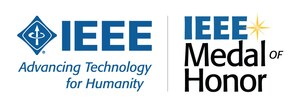Telemedicine Technology is Ready but Deployments Need a Boost to Meet Exploding Demand for Healthcare Access Around the World, Say IEEE Experts
IEEE Working to Foster Collaboration between Technologists and Clinicians to Ensure Real-World Success of Telemedicine Applications
PISCATAWAY, N.J., July 26, 2011 /PRNewswire/ -- Telemedicine is technologically ready to meet the growing demand for access to health services in developing nations and remote areas around the world, say experts from IEEE, the world's largest professional technical association. However, widespread use of telemedicine will require greater collaboration between technologists and clinicians to ensure it delivers on its promises in the real world – millions more people reached, with measurably better outcomes for those patients.
"From faster wireless networks to mobile imaging applications to biosensors, the technologies for delivering telemedicine services are certainly there," said Dr. Yongmin Kim, IEEE Fellow and professor of bioengineering and electrical engineering at the University of Washington. "But advancing telemedicine through technology innovation alone is not enough. We now need to make it easier for the healthcare providers to embrace and apply these technologies in diverse medical environments."
Dr. Yadin David, IEEE Senior Member and founder of the Center for Telehealth and e-Health Law in Washington, D.C., recommends healthcare providers and technologists agree on standards for minimum system performance of telemedicine networks and platforms, along with the development of a common vocabulary to describe these technologies. "Healthcare providers can look at the technical description of a heart pump or X-ray machine and understand whether it will meet their requirements in delivering quality care to a patient. But how easily can radiologists, for example, understand whether the pixel resolution or compression rate of their video equipment will enable them to clearly see fine detail on images for more accurate diagnoses?" he said. "We need to translate technical criteria into the clinical domain to make it easier for healthcare providers to relate to it."
For its part, IEEE is actively working to encourage the collaboration required for increased telemedicine adoption by bringing the technical experts in telemedicine together with the clinicians who must use it effectively. In October, it will host a joint medical technology conference with the American Medical Association, 16-18 October, 2011 in Boston. A pioneering event in the industry, the AMA-IEEE Medical Technology Conference will help foster mutual understanding between the clinical and technical experts working on this issue.
In addition, the IEEE Engineering in Medicine and Biology (EMB) Society International Conference (EMBC 2011), 30 August-3 September in Boston, will include several presentations on the latest advancements in telemedicine, including wireless health technologies, robot-aided surgery, and health information management.
The IEEE Standards Association, a globally recognized standards-setting body within IEEE, has also been actively developing standards that contribute to telemedicine. For example, the IEEE 11073™ family of standards enables interoperable communication between medical devices and external computer systems. They provide automatic and detailed electronic data capture of patient vital signs information and device operational data.
The global telemedicine market is already experiencing significant momentum, and is expected to grow from $9.8 billion in 2010 to $23 billion in 2015, a compound annual growth rate (CAGR) of 18.6 percent over the next several years, according to BCC Research. Looking ahead, IEEE experts expect a number of technologies to play strategic roles in advancing the adoption of telemedicine, including smart phones, wearable sensors and instrumentations. For example, smart phones, combined with high-speed mobile networks, may be used to non-invasively monitor health conditions, such as blood glucose levels of diabetic patients. Further advancements in bio-sensors, such as longer lasting and more reliable electrocardiogram (EKG) sensors that remotely monitor a patient's risk for a heart attack, will also significantly improve the quality of and access to healthcare with minimal cost.
These innovations could be particularly beneficial in developing countries such as India where 70 percent of the country's population resides in rural areas compared to 90 percent of the healthcare centers located in urban areas of the country. "The urban population has always had the benefit of specialized healthcare," said Dinesh Bindiganavale, IEEE Member and independent healthcare consultant. "Telemedicine is extending this benefit to the rural population and increasing access to quality healthcare where it is needed the most."
Additional IEEE resources and multimedia content on telemedicine include:
- IEEE Spectrum - "Patients in ICUs Do Better With Telemedicine" - http://spectrum.ieee.org/biomedical/diagnostics/patients-in-icus-do-better-with-telemedicine
- IEEE.tv - "EMB AMA Medical Technology and Individualized Care" - http://www.ieee.org/portal/ieeetv/viewer.html?progId=124319
- IEEE News Release - "Broader 4G Wireless Access Will Accelerate Economic Development and Improve Quality of Life in Rural and Developing Regions of the World, Say IEEE Wireless Experts" - http://www.ieee.org/about/news/2011/16may_2_2011.html
For more information on IEEE, or to speak with a member about the benefits of telemedicine in rural and developing regions of the world, please contact: [email protected].
About IEEE
IEEE, the world's largest technical professional association, is dedicated to advancing technology for the benefit of humanity. Through its highly cited publications, conferences, technology standards, and professional and educational activities, IEEE is the trusted voice on a wide variety of areas ranging from aerospace systems, computers and telecommunications to biomedical engineering, electric power and consumer electronics. Learn more: http://www.ieee.org.
SOURCE IEEE
WANT YOUR COMPANY'S NEWS FEATURED ON PRNEWSWIRE.COM?
Newsrooms &
Influencers
Digital Media
Outlets
Journalists
Opted In






Share this article